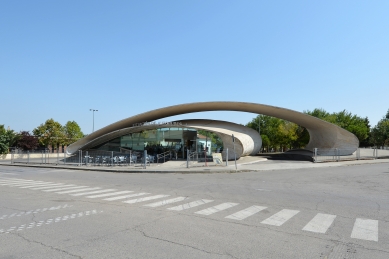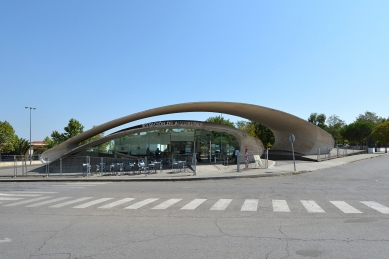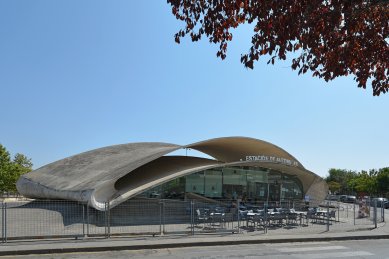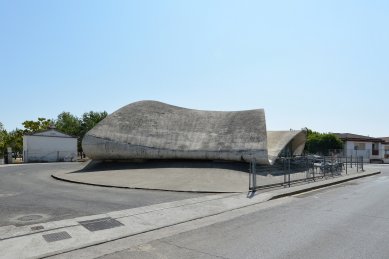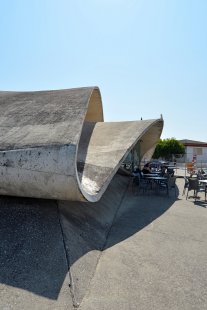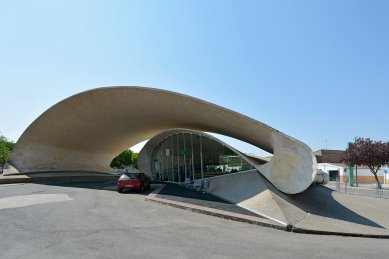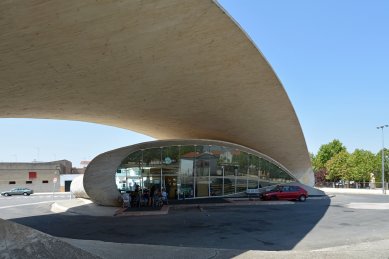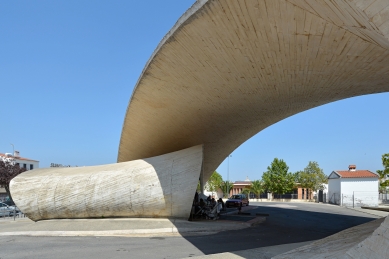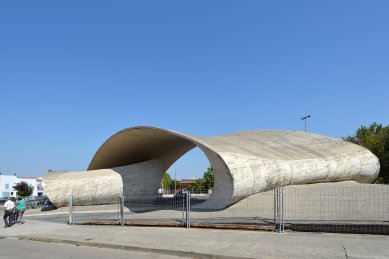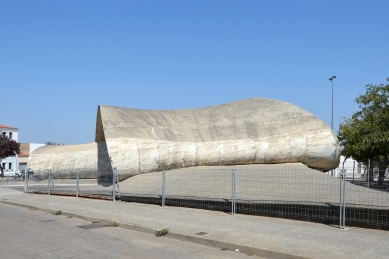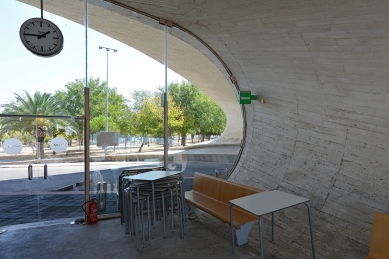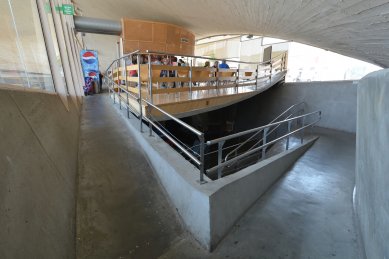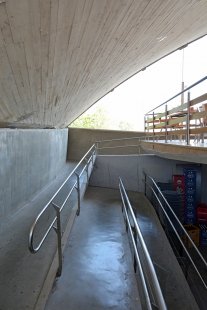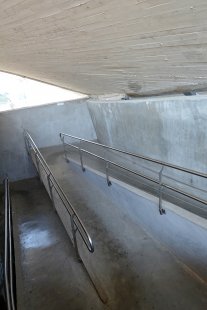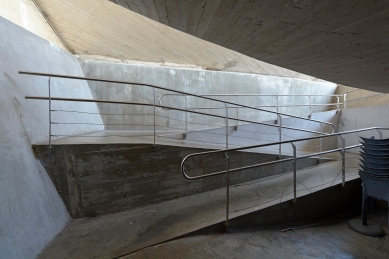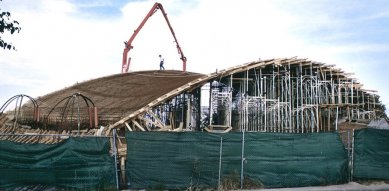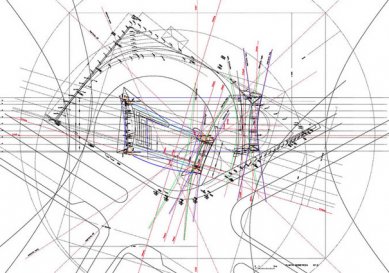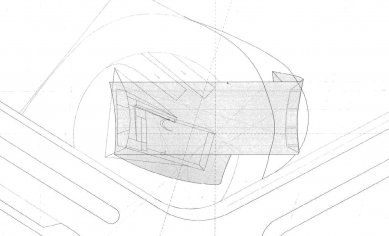
Bus stop Casar de Cáceres
Bus station of Casar de Cáceres

The bus stop in the four-thousand-inhabitant Spanish town of Casar de Cáceres resembles a frozen ribbon of a modern gymnast with its expressionistic form. While the use of construction materials pays homage to the Strasbourg stop by the divine Zaha, it goes further in form and approaches the liquid architecture of Maurice Nio. Until now, we have primarily seen that architects can fruitfully intervene in the engineering typology of transportation buildings, especially with Dutch architects. The bus stop in Casar de Cáceres is a far cry from the steel-and-glass boxes that abound in every larger city. Instead of having passengers wait for the bus in a glass box, Rubio has created a ceremonial canopy where— to quote a classic— the floor, walls, and ceiling are one. The stop reflects Le Corbusier's sculptural legacy, yet the author does not concern himself with history or context. He simply believes that the local citizens will accept it as it is and that it will become a new icon for the town. It doesn’t matter that renowned Norman Foster designed the bus stops in Paris, as they all look the same as those in Brno or anywhere else. While the old Art Nouveau entrances to the Paris metro have become an unmistakable symbol of the city, the new attempt has been relegated to the global village. This year, Liberec also has a bus stop that is similarly distant from common stops. However, since we are still in the Czech Republic, the result by David Černý is absurd and does not advance Czech architecture at all.
The English translation is powered by AI tool. Switch to Czech to view the original text source.
2 comments
add comment
Subject
Author
Date
autobusová zastávka Casar de Carceres
já
31.01.07 01:20
Wspaniałą realizacja
Roman Kuboś
13.04.08 01:58
show all comments


